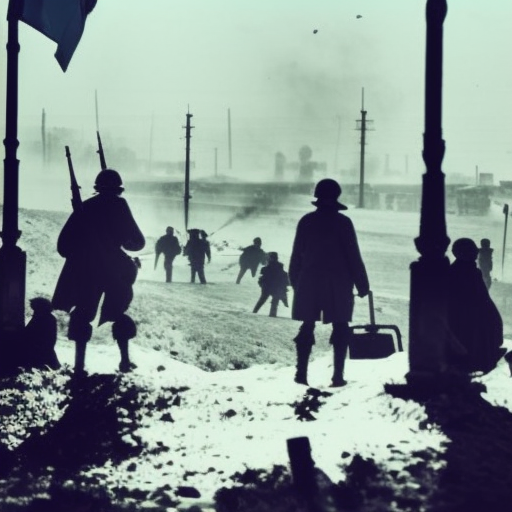Summary:
The Ukrainian War of Independence, also known as the Ukrainian Revolution, was a conflict that took place from 1917 to 1921. It was a struggle for self-determination and independence by the Ukrainian people against various forces, including the Russian Empire, the Central Powers, and the Bolsheviks. The war resulted in the establishment of the Ukrainian People’s Republic and the Soviet Union’s control over parts of Ukraine.
Background:
The Ukrainian War of Independence was a direct consequence of the Russian Revolution of 1917. As the Russian Empire collapsed, various factions emerged in Ukraine, each seeking to shape the country’s future. The Ukrainian Central Rada, a representative body, declared Ukrainian autonomy in June 1917. However, this declaration was not recognized by the Russian Provisional Government, which led to tensions and eventually armed conflict.
Course of the War:
The war can be divided into several phases. Initially, Ukrainian forces fought against both the Russian Empire and the Central Powers, who sought to exploit the chaos in Ukraine for their own gain. In 1918, the Central Powers occupied large parts of Ukraine, leading to the establishment of a puppet state, the Hetmanate, under German and Austro-Hungarian control. However, this regime was short-lived, as Ukrainian nationalist forces, led by the Ukrainian People’s Republic, launched a successful uprising and regained control of most of the country.
The situation changed dramatically in 1919 when the Bolsheviks, led by Vladimir Lenin, launched an offensive against the Ukrainian People’s Republic. The Red Army quickly gained ground, and by early 1920, they had captured Kyiv, the capital of Ukraine. The Ukrainian forces, supported by foreign intervention, including Polish and Romanian troops, launched a counteroffensive and managed to push the Bolsheviks back. However, the tide turned once again when the Polish-Soviet War broke out, diverting Polish forces from Ukraine and leaving the Ukrainian forces vulnerable.
Outcome:
The Ukrainian War of Independence ended in 1921 with the signing of the Treaty of Riga. The treaty recognized Soviet control over most of Ukraine, while the western part of the country became part of the Second Polish Republic. The Ukrainian People’s Republic ceased to exist, and Ukraine was divided between two major powers.
The war had a significant impact on Ukraine’s political landscape. The Bolsheviks established the Ukrainian Soviet Socialist Republic, which later became one of the founding republics of the Soviet Union. The western part of Ukraine, which had been under Polish control, experienced a period of Polonization, which led to tensions between the Ukrainian population and the Polish authorities.
The Ukrainian War of Independence also had cultural and social consequences. It sparked a cultural revival and a renewed interest in Ukrainian identity and heritage. Ukrainian intellectuals, writers, and artists played a crucial role in shaping the national consciousness and promoting Ukrainian culture.
In conclusion, the Ukrainian War of Independence was a complex conflict that emerged from the aftermath of the Russian Revolution. It involved multiple factions and foreign powers, resulting in the establishment of the Ukrainian People’s Republic and the division of Ukraine between the Soviet Union and Poland. The war had a lasting impact on Ukraine’s political, cultural, and social development.












